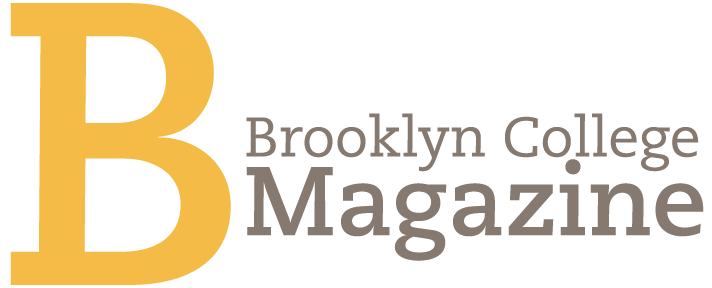Retooling for a Remote World

Many college offices teamed up to make sure students got the information and help they needed for remote education.
By the time New York Governor Andrew Cuomo announced that the state’s universities would switch to distance learning in early March, a group of college officials who support student success had already been making contingency plans for more than a week.
“We are happy to report that no existing appointments were canceled, and we were able to schedule new appointments with no delay in service,” says Tracy Newton, director of the Center for Academic Advisement and Student Success, which switched its main advisement sessions with students to Zoom.
Much was the same throughout the college, where the effort to transition many services that had long existed mostly on an in-person basis—from advisement to commencement, and now, student orientation—has mostly been smooth. Upon Provost Ann Lopes’ announcement that the college would resume distance learning for the fall 2020 semester, many of these programs and offices that have supported remote learning are being refined.
College offices teamed up to make sure students got the information and help they needed for remote education. Within the first couple of weeks of the quarantine, the college set up a Virtual Front Desk to field calls from students who wanted to speak to a live person. “In these times, having access to a real human being is more important than ever,” says Newton.
By early July, nearly 2,000 students had used the service, where they can also get information about emergency grants and laptop loans, and inquire about other technology issues. Offices like the bursar, financial aid, scholarships, personal counseling, enrollment services, and many more offered immediate access during regular office hours.
Ronald C. Jackson, the vice president for student services, says that some of the most significant hiccups came when making sure all students had access to technology. The college had to purchase some hot spots because in some cases, Wi-Fi service providers who had offered deals for students were inaccessible to those living in buildings with thick walls. Some courses had to be adjusted to accommodate compatibility issues with the Chromebooks and iPads the college loaned out.
The college also experimented with the best ways to get its messages and announcements out to as many students as possible, working with formats such as Instagram Live chats with President Michelle J. Anderson. The social sessions proved popular, with chats on financial aid, personal counseling, academic advisement, and the Magner Career Center.
“We’re trying some new things,” says Jackson. “Overall, the transition has gone well, but as we prepare for the fall, we continue to have discussions on what we can improve and build on.”
One of the biggest events the college had to retool was the annual commencement exercises. The virtual graduation ceremony featured keynote and valedictory addresses in addition to the usual greetings from politicians, professors, and others who wished the Class of 2020 well. Each graduate’s name scrolled across the college website’s homepage. The celebration got far and away more views than any of the other CUNY campus virtual commencement ceremonies: 9,000 views on YouTube, more than 60,000 impressions on Twitter and Instagram, and nearly 200,000 people reached on Facebook.
For the college’s new student orientation, a website was launched that includes a virtual campus tour and greetings from the president, the provost, and the heads of the undergraduate and graduate student government. There are also videos on technology for remote learning, student clubs, and other topics like financial aid.
Magner Career Center Director Natalia Guarin-Klein says the center has hosted 180 zoom sessions with some 5,300 registered attendees and has engaged more than 1,000 new students. They have hosted virtual job fairs, alumni and employer networking events, and career 101 programming. The center also created a Slack group with more than 253 students who are currently seeking jobs, and has been able to engage with more alumni in the virtual environment who otherwise would not be able to attend. The center also launched its first career academy for small-group career development to help students gain a competitive edge and remain productive during the pandemic.
“While some of our services are delivered differently, the passion and commitment to help students have not been negatively impacted by the center being virtual,” says Guarin-Klein.
Other offices, like the LGBTQ Support Center, the Veteran and Military Programs Office, the Black and Latino Male Initiative, and the Immigrant Student Support Office, are conducting regular Zoom meetings with the students they serve. Both Personal Counseling and the Student Health Clinic are offering tele-appointments.
Even services for the college’s Alumni Engagement office saw opportunities in the transition to the virtual environment, says its director, Lisa Dicce. The office tried new engagement strategies on social media and around online events that were low cost and more accessible to a wider number of people.
“The world has changed, but our mission has not,” says Dicce. “We are planning for all things to remain virtual a while longer and are moving full steam ahead with those plans.”


